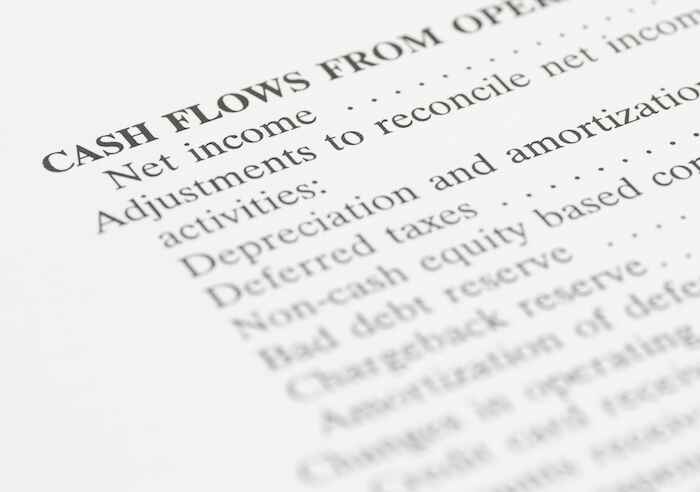How to Properly Value a Stock
Andy Snyder|June 17, 2021

What you’re about to learn could alter everything you know about investing.
It may change what you buy… how much you pay… and even how you think about making money.
Even more, if we do our job, it should put some extra jingle in your pocket… maybe even a lot of it.
As you know, we’ve been in the investing game for a long time. Things have changed quite a bit from the days when most folks used to get stock quotes from the back few pages of the local paper’s business section.
Some say the changes have killed fundamental investing.
The Fed’s free-money bonanza… the death of interest rates… the instant knowledge transfer made possible by the internet… meme stocks… high-speed trading… ultra-efficient markets… they’ve all altered the way we think about trading and investing.
And while fundamentalists like Warren Buffett may not be doing so well these days, we can’t forget the fact that when we’re buying shares, we’re buying a stake in a real company, with real sales and, hopefully, real profits.
Numbers may not be as important as they once were… but we’d be stupid to overlook them.
Doing so always leads to trouble.
Every investor – no matter the strategy they use – must know the basics of how a stock is priced and why prices change.
Fortunately, that’s far easier to understand than most folks think.
Today vs. Tomorrow
In yesterday’s essay, we covered the essential fact that the value of tomorrow’s money is determined by what we can get for it today.
If we can get only a 1% return on our cash in the bank, an alternative investment doesn’t have to be all that aggressive for it to make sense. But if interest rates are at 10%, a stock has to show much more potential before it should get our cash.
It’s simple logic.
Valuing a stock isn’t much more complicated. We just need to know what it’s likely to return over the next few years.
This is why stocks tend to jump around so much after an earnings report. The new figures allow us to adjust our profit projections up or down, moving the price we’re willing to pay for future profits accordingly.
It’s those future profits that determine what we’re willing to pay today.
Figuring It Out
Just as we did with yesterday’s formula, we simply need to price the value of tomorrow’s payouts in today’s dollars.
There are all sorts of ways to do this.
Ben Graham had his formula. It was popular. But now it’s wildly outdated.
Similarly, many folks use a basic price-to-earnings multiplier. It’s anything but helpful. It does nothing to factor in dirt cheap debt.
In business school, we calculated (by hand) valuations based on dividend payouts. The numbers hardly ever matched real-world prices. Because it was devised long before the heavy hand of the Fed ruled the market, the formula based on dividend payouts doesn’t leave much room for the role of interest rates.
That’s why we now turn to something called “discounted cash flow.”
The idea is simple and straightforward.
We can find the value of an asset based on how much profit we believe it will generate in the future. From there, going back to yesterday’s idea, we can add in the value of money today (using interest rates). This gives us what is called the discount rate.
If the final figure is greater than an asset’s current price, that asset is likely worth our money.
If not… we should move on.
The formula looks like this:
DCF = (CF/1+r)^1 +( CF/1+r)^2 + (CF/1+r)^n
There are just a few variables: cash flow (CF), the discount rate (r) and the number of years or quarters in the projection (n). Most standard calculations used a period of three or four years. After that, the impact of additional periods wanes and the accuracy of estimates falls quickly.
The Science of Art
Pay attention to that last line. It hits on the limitations of this formula and, really, all valuation formulas.
In order for us to discount the value of future cash flows, we need to know those cash flows.
But that’s impossible. The best we can do is make good assumptions.
That’s what makes stock picking more art than science… especially these days.
But it’s for exactly that reason that we’ve concentrated on the basics so much this week. Yes, formulas are complex and boring. We’d much rather poke fun of the news of the day or tell you about our antics with a wild, pooping dog yesterday (we will, don’t worry).
But if you want to be a successful investor… you must know the basics. You must know the science behind the art.
In this case, we want to show you exactly what moves stock prices.
Yes, estimates of future profits are a leading factor. But interest rates have just as much power, perhaps even more these days.
Few folks understand that.
In times like these, it’s costing them… a lot.
That’s why Manward Letter‘s model portfolio bases its allocation percentages on interest rates – and nothing else.
As they ebb and flow, so does our strategy.
It’s the most effective strategy we know of.
Just ask our subscribers.
Rates are moving the market. Now you know why.

Andy Snyder
Andy Snyder is an American author, investor and serial entrepreneur. He cut his teeth at an esteemed financial firm with nearly $100 billion in assets under management. Andy and his ideas have been featured on Fox News, on countless radio stations, and in numerous print and online outlets. He’s been a keynote speaker and panelist at events all over the world, from four-star ballrooms to Capitol hearing rooms.





